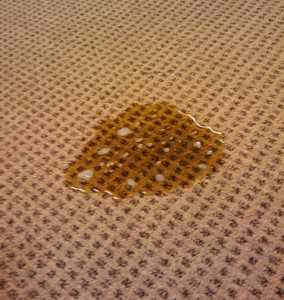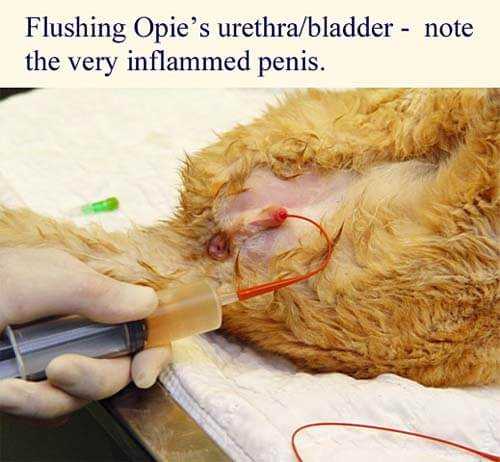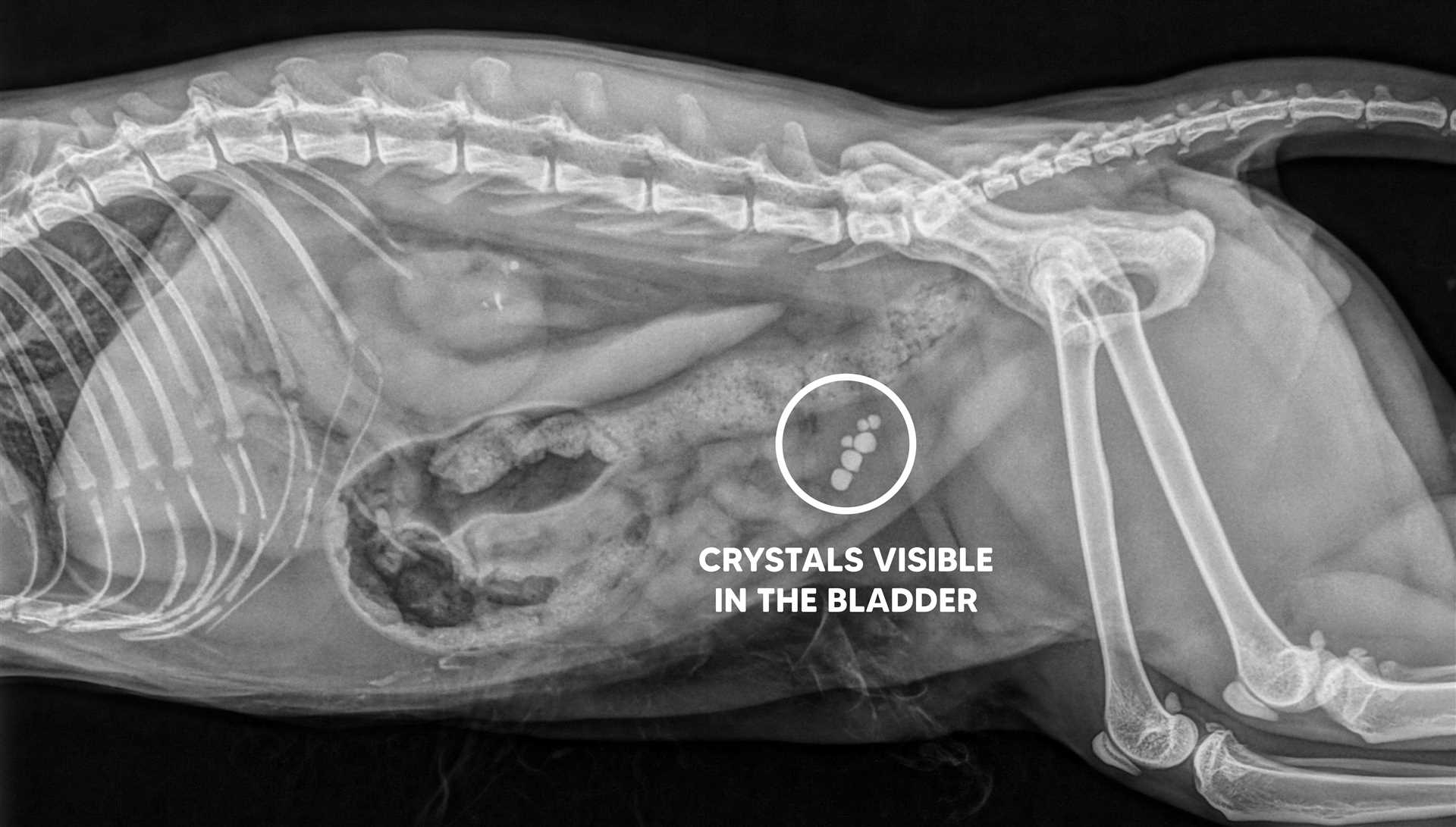



To maintain optimal health, hydration is key. Drinking plenty of water helps dilute the minerals that can lead to the formation of solid particles in the bladder. Providing fresh, clean water daily encourages fluid intake and can significantly reduce the risk of complications.
Diet plays a major role in urinary health. Choosing high-quality, balanced nutrition formulated specifically for urinary tract well-being is essential. Look for foods low in magnesium and phosphorous, as these nutrients often contribute to the development of unwanted deposits.
Regular veterinary check-ups are a must. Noticing changes in behavior, litter box habits, or signs of discomfort should prompt immediate professional evaluation. These indicators can signal underlying issues that require attention, including potential blockages or infections.
Stress management is often overlooked. Creating a calm environment, providing engaging toys, and maintaining a consistent routine can help minimize anxiety. Stress has been linked to various health issues, including those affecting the urinary system.
Monitoring weight is also crucial. Maintaining a healthy body condition can prevent numerous health complications, including urinary tract issues. Obesity can lead to a range of problems, including increased risk factors for developing crystals.
Understanding the Types of Crystals Found in Cat Urine

Struvite and calcium oxalate are the two main types of mineral formations that can appear in feline excretions. Struvite tends to show up in alkaline conditions, often linked to urinary tract infections. Adjusting diet can help manage this type; consider feeding a special formula that promotes acidic pH levels.
Calcium oxalate formations occur in more acidic environments. These are tougher to manage since they can develop even in healthy felines. Keeping hydration levels high is essential. Encourage plenty of water intake by providing fresh, filtered options or using a water fountain to stimulate drinking.
Other Less Common Crystalline Structures

Ammonium urate can also form, typically seen in cases of liver issues or certain genetic conditions. This requires veterinary intervention for proper management. Cystine crystals, although rare, may arise from a hereditary disorder affecting amino acid absorption. Specialized diets and supplements can be essential for controlling these formations.
Regular veterinary check-ups are crucial for early detection of any issues related to these formations. Monitoring litter box habits and behaviors can provide valuable insights into overall health. Prompt action can prevent complications and maintain well-being.
Common Causes of Urinary Crystals in Cats

Diet plays a significant role. High magnesium and phosphorus levels in food can lead to the formation of solid deposits. A diet low in moisture can contribute to concentrated waste, increasing the likelihood of crystal development.
Reduced water intake is another factor. Cats often don’t drink enough, especially if they’re on dry food. Encouraging hydration through wet food or water fountains can help dilute the urine.
Obesity is a risk factor. Overweight individuals may have reduced mobility and less frequent visits to the litter box, which can lead to concentrated waste and subsequent crystal formation.
Underlying Health Issues
Conditions like urinary tract infections or metabolic disorders can increase susceptibility. For instance, diabetes can affect urine concentration, promoting crystal formation. Regular veterinary check-ups can identify and manage these health concerns effectively.
Stress can also trigger issues. Environmental changes or conflicts with other pets may lead to behavioral changes, influencing litter box habits and overall health. Creating a stable environment can alleviate some stressors.
Signs and Symptoms of Crystal Formation in Feline Urine
Pay attention to these specific signs, as they may indicate the presence of urinary issues. Early detection can lead to better outcomes.
- Frequent urination: If your furry friend visits the litter box more often than usual, it may signal discomfort or irritation.
- Straining to urinate: Watch for signs of difficulty or prolonged efforts to urinate. This can be a distressing symptom.
- Blood in urine: Any noticeable discoloration, especially a reddish hue, should prompt an immediate veterinary visit.
- Increased thirst: If I notice my water bowl emptying faster, it may indicate an underlying issue.
- Changes in behavior: Lethargy, hiding, or signs of pain can suggest discomfort and should not be ignored.
Monitor dietary habits and water intake; a balanced diet is crucial for maintaining urinary health. If you need guidance on caring for a sick cat, check out this link for helpful advice on what can you give a cat for a cold.
Recognizing these symptoms early can lead to timely intervention and treatment. Always consult with a veterinarian for a proper diagnosis and tailored care for your beloved companion.
Preventive Measures to Reduce Urinary Crystals in Felines
Ensure a high water intake by providing fresh, clean water at all times. Consider using a water fountain to encourage drinking, as the moving water attracts attention.
Incorporate wet food into my diet. This not only increases moisture consumption but can also improve overall nutrition. Look for high-quality canned options that list meat as the first ingredient.
Monitor the pH levels of food. Select specially formulated diets designed to maintain optimal urinary health. Consult with a veterinarian to identify the best options based on individual needs.
Maintain a healthy weight through proper portion control and regular playtime. Obesity can lead to various health problems, including urinary issues.
Provide a stress-free environment. Stress can contribute to various health problems, including urinary concerns. Create a calm space with plenty of hiding spots and vertical spaces to explore.
Keep litter boxes clean and accessible. Scoop daily and ensure there are enough boxes available, ideally one more than the number of pets in the household.
Regular vet check-ups are crucial for early detection and prevention of potential issues. Annual or biannual visits can help monitor urinary health.
Observe behavior for any changes. If I notice anything unusual, such as increased urination or straining, it’s important to consult a veterinarian promptly.
Video:
To maintain optimal health, hydration is key. Drinking plenty of water helps dilute the minerals that can lead to the formation of solid particles in the bladder. Providing fresh, clean water daily encourages fluid intake and can significantly reduce the risk of complications.
Diet plays a major role in urinary health. Choosing high-quality, balanced nutrition formulated specifically for urinary tract well-being is essential. Look for foods low in magnesium and phosphorous, as these nutrients often contribute to the development of unwanted deposits.
Regular veterinary check-ups are a must. Noticing changes in behavior, litter box habits, or signs of discomfort should prompt immediate professional evaluation. These indicators can signal underlying issues that require attention, including potential blockages or infections.
Stress management is often overlooked. Creating a calm environment, providing engaging toys, and maintaining a consistent routine can help minimize anxiety. Stress has been linked to various health issues, including those affecting the urinary system.
Monitoring weight is also crucial. Maintaining a healthy body condition can prevent numerous health complications, including urinary tract issues. Obesity can lead to a range of problems, including increased risk factors for developing crystals.
Understanding the Types of Crystals Found in Cat Urine

Struvite and calcium oxalate are the two main types of mineral formations that can appear in feline excretions. Struvite tends to show up in alkaline conditions, often linked to urinary tract infections. Adjusting diet can help manage this type; consider feeding a special formula that promotes acidic pH levels.
Calcium oxalate formations occur in more acidic environments. These are tougher to manage since they can develop even in healthy felines. Keeping hydration levels high is essential. Encourage plenty of water intake by providing fresh, filtered options or using a water fountain to stimulate drinking.
Other Less Common Crystalline Structures

Ammonium urate can also form, typically seen in cases of liver issues or certain genetic conditions. This requires veterinary intervention for proper management. Cystine crystals, although rare, may arise from a hereditary disorder affecting amino acid absorption. Specialized diets and supplements can be essential for controlling these formations.
Regular veterinary check-ups are crucial for early detection of any issues related to these formations. Monitoring litter box habits and behaviors can provide valuable insights into overall health. Prompt action can prevent complications and maintain well-being.
Common Causes of Urinary Crystals in Cats

Diet plays a significant role. High magnesium and phosphorus levels in food can lead to the formation of solid deposits. A diet low in moisture can contribute to concentrated waste, increasing the likelihood of crystal development.
Reduced water intake is another factor. Cats often don’t drink enough, especially if they’re on dry food. Encouraging hydration through wet food or water fountains can help dilute the urine.
Obesity is a risk factor. Overweight individuals may have reduced mobility and less frequent visits to the litter box, which can lead to concentrated waste and subsequent crystal formation.
Underlying Health Issues
Conditions like urinary tract infections or metabolic disorders can increase susceptibility. For instance, diabetes can affect urine concentration, promoting crystal formation. Regular veterinary check-ups can identify and manage these health concerns effectively.
Stress can also trigger issues. Environmental changes or conflicts with other pets may lead to behavioral changes, influencing litter box habits and overall health. Creating a stable environment can alleviate some stressors.
Signs and Symptoms of Crystal Formation in Feline Urine
Pay attention to these specific signs, as they may indicate the presence of urinary issues. Early detection can lead to better outcomes.
- Frequent urination: If your furry friend visits the litter box more often than usual, it may signal discomfort or irritation.
- Straining to urinate: Watch for signs of difficulty or prolonged efforts to urinate. This can be a distressing symptom.
- Blood in urine: Any noticeable discoloration, especially a reddish hue, should prompt an immediate veterinary visit.
- Increased thirst: If I notice my water bowl emptying faster, it may indicate an underlying issue.
- Changes in behavior: Lethargy, hiding, or signs of pain can suggest discomfort and should not be ignored.
Monitor dietary habits and water intake; a balanced diet is crucial for maintaining urinary health. If you need guidance on caring for a sick cat, check out this link for helpful advice on what can you give a cat for a cold.
Recognizing these symptoms early can lead to timely intervention and treatment. Always consult with a veterinarian for a proper diagnosis and tailored care for your beloved companion.
Preventive Measures to Reduce Urinary Crystals in Felines
Ensure a high water intake by providing fresh, clean water at all times. Consider using a water fountain to encourage drinking, as the moving water attracts attention.
Incorporate wet food into my diet. This not only increases moisture consumption but can also improve overall nutrition. Look for high-quality canned options that list meat as the first ingredient.
Monitor the pH levels of food. Select specially formulated diets designed to maintain optimal urinary health. Consult with a veterinarian to identify the best options based on individual needs.
Maintain a healthy weight through proper portion control and regular playtime. Obesity can lead to various health problems, including urinary issues.
Provide a stress-free environment. Stress can contribute to various health problems, including urinary concerns. Create a calm space with plenty of hiding spots and vertical spaces to explore.
Keep litter boxes clean and accessible. Scoop daily and ensure there are enough boxes available, ideally one more than the number of pets in the household.
Regular vet check-ups are crucial for early detection and prevention of potential issues. Annual or biannual visits can help monitor urinary health.
Observe behavior for any changes. If I notice anything unusual, such as increased urination or straining, it’s important to consult a veterinarian promptly.
Video:
To maintain optimal health, hydration is key. Drinking plenty of water helps dilute the minerals that can lead to the formation of solid particles in the bladder. Providing fresh, clean water daily encourages fluid intake and can significantly reduce the risk of complications.
Diet plays a major role in urinary health. Choosing high-quality, balanced nutrition formulated specifically for urinary tract well-being is essential. Look for foods low in magnesium and phosphorous, as these nutrients often contribute to the development of unwanted deposits.
Regular veterinary check-ups are a must. Noticing changes in behavior, litter box habits, or signs of discomfort should prompt immediate professional evaluation. These indicators can signal underlying issues that require attention, including potential blockages or infections.
Stress management is often overlooked. Creating a calm environment, providing engaging toys, and maintaining a consistent routine can help minimize anxiety. Stress has been linked to various health issues, including those affecting the urinary system.
Monitoring weight is also crucial. Maintaining a healthy body condition can prevent numerous health complications, including urinary tract issues. Obesity can lead to a range of problems, including increased risk factors for developing crystals.
Understanding the Types of Crystals Found in Cat Urine

Struvite and calcium oxalate are the two main types of mineral formations that can appear in feline excretions. Struvite tends to show up in alkaline conditions, often linked to urinary tract infections. Adjusting diet can help manage this type; consider feeding a special formula that promotes acidic pH levels.
Calcium oxalate formations occur in more acidic environments. These are tougher to manage since they can develop even in healthy felines. Keeping hydration levels high is essential. Encourage plenty of water intake by providing fresh, filtered options or using a water fountain to stimulate drinking.
Other Less Common Crystalline Structures

Ammonium urate can also form, typically seen in cases of liver issues or certain genetic conditions. This requires veterinary intervention for proper management. Cystine crystals, although rare, may arise from a hereditary disorder affecting amino acid absorption. Specialized diets and supplements can be essential for controlling these formations.
Regular veterinary check-ups are crucial for early detection of any issues related to these formations. Monitoring litter box habits and behaviors can provide valuable insights into overall health. Prompt action can prevent complications and maintain well-being.
Common Causes of Urinary Crystals in Cats

Diet plays a significant role. High magnesium and phosphorus levels in food can lead to the formation of solid deposits. A diet low in moisture can contribute to concentrated waste, increasing the likelihood of crystal development.
Reduced water intake is another factor. Cats often don’t drink enough, especially if they’re on dry food. Encouraging hydration through wet food or water fountains can help dilute the urine.
Obesity is a risk factor. Overweight individuals may have reduced mobility and less frequent visits to the litter box, which can lead to concentrated waste and subsequent crystal formation.
Underlying Health Issues
Conditions like urinary tract infections or metabolic disorders can increase susceptibility. For instance, diabetes can affect urine concentration, promoting crystal formation. Regular veterinary check-ups can identify and manage these health concerns effectively.
Stress can also trigger issues. Environmental changes or conflicts with other pets may lead to behavioral changes, influencing litter box habits and overall health. Creating a stable environment can alleviate some stressors.
Signs and Symptoms of Crystal Formation in Feline Urine
Pay attention to these specific signs, as they may indicate the presence of urinary issues. Early detection can lead to better outcomes.
- Frequent urination: If your furry friend visits the litter box more often than usual, it may signal discomfort or irritation.
- Straining to urinate: Watch for signs of difficulty or prolonged efforts to urinate. This can be a distressing symptom.
- Blood in urine: Any noticeable discoloration, especially a reddish hue, should prompt an immediate veterinary visit.
- Increased thirst: If I notice my water bowl emptying faster, it may indicate an underlying issue.
- Changes in behavior: Lethargy, hiding, or signs of pain can suggest discomfort and should not be ignored.
Monitor dietary habits and water intake; a balanced diet is crucial for maintaining urinary health. If you need guidance on caring for a sick cat, check out this link for helpful advice on what can you give a cat for a cold.
Recognizing these symptoms early can lead to timely intervention and treatment. Always consult with a veterinarian for a proper diagnosis and tailored care for your beloved companion.
Preventive Measures to Reduce Urinary Crystals in Felines
Ensure a high water intake by providing fresh, clean water at all times. Consider using a water fountain to encourage drinking, as the moving water attracts attention.
Incorporate wet food into my diet. This not only increases moisture consumption but can also improve overall nutrition. Look for high-quality canned options that list meat as the first ingredient.
Monitor the pH levels of food. Select specially formulated diets designed to maintain optimal urinary health. Consult with a veterinarian to identify the best options based on individual needs.
Maintain a healthy weight through proper portion control and regular playtime. Obesity can lead to various health problems, including urinary issues.
Provide a stress-free environment. Stress can contribute to various health problems, including urinary concerns. Create a calm space with plenty of hiding spots and vertical spaces to explore.
Keep litter boxes clean and accessible. Scoop daily and ensure there are enough boxes available, ideally one more than the number of pets in the household.
Regular vet check-ups are crucial for early detection and prevention of potential issues. Annual or biannual visits can help monitor urinary health.
Observe behavior for any changes. If I notice anything unusual, such as increased urination or straining, it’s important to consult a veterinarian promptly.









